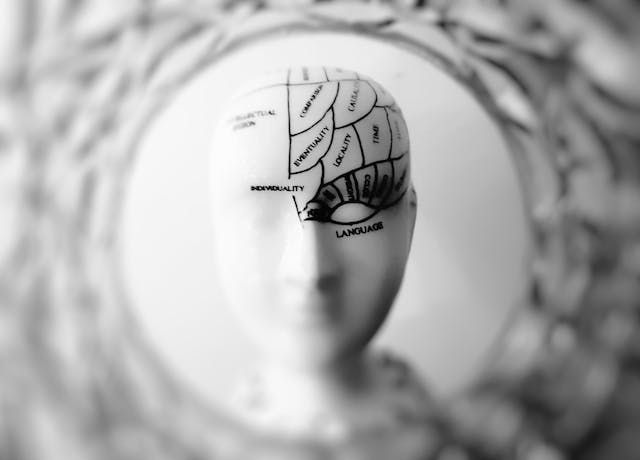
In the world of trauma therapy, the journey towards healing is often likened to tending to a garden. Just as mowing the grass can provide immediate relief, it is equally important to uproot the weeds. This uproots the deep-rooted traumas and triggers that continue to cause distress. This blog post delves into the significance of going beyond the surface. It addresses the core issues that underlie our struggles in therapy. By embracing all of our parts and committing to the deep, transformative work, we can experience profound personal growth and transformation.
The Allure of Quick Fixes in Our Healing Journey

In the modern quest for instant gratification, it's tempting to seek out immediate, albeit temporary, solutions to our mental health challenges. This propensity for quick fixes is especially pronounced when we face the daunting complexities of trauma. Rather than embarking on the arduous journey of uncovering and addressing the root causes of our pain, we may find ourselves gravitating towards strategies that offer swift relief.
These strategies, akin to putting a band-aid on a deep wound, can momentarily ease our symptoms but fail to heal the underlying injuries.
The lure of these superficial interventions is understandable; they promise a reprieve from our discomfort with minimal effort and time. However, they bypass the crucial process of engaging with and resolving the core issues that perpetuate our suffering. By relying on these temporary fixes, we risk remaining ensnared in a cycle of distress, missing the opportunity for true healing and growth that comes from confronting and working through our traumas. It's essential to recognize the limitations of these short-term solutions and muster the courage to embark on the more challenging, yet ultimately more rewarding, path of deep therapeutic work.
Understanding the Depth of Our Weeds: Trauma and Triggers

Just like invasive species that can overtake a healthy garden if left unchecked, trauma and triggers can deeply entrench themselves in our psyche, often lurking unseen until they suddenly sprout into our consciousness, causing turmoil and distress. These roots of our issues are not always visible on the surface, making them challenging to identify and address without deliberate and careful exploration. They stem from past experiences that have left a lasting impact, influencing our reactions, behaviors, and relationships in ways we might not fully understand.
To effectively deal with these underlying problems, it's crucial to adopt an approach that goes beyond mere symptom management. This involves a willingness to delve into the uncomfortable and painful memories that feed our triggers and sustain our traumas. Engaging in this type of introspection allows us to uncover the origin of our distress. It provides us with the insight needed to begin the healing process. It requires courage to confront these aspects of our past. With that, we can start to disentangle the complex web of emotions and reactions that hold us back. This will result in genuine recovery and emotional freedom.
The Challenge of Accessing the Logical Brain During Crises

When confronted with a crisis, our brain's instinctual responses often take the wheel, sidelining our capacity for logical thinking. This shift occurs as the limbic system, designed to protect us through fight or flight reactions, dominates our mental processes. As a result, our ability to think rationally, solve problems, and make clear decisions is greatly diminished. This natural reaction to threat or stress complicates the journey of healing from trauma. It hinders our ability to engage with and process our deepest pains in the moment they are most activated.
Overcoming this challenge is a critical step in trauma therapy. This seeks to equip individuals with strategies to soothe the limbic system's alarm signals. Techniques such as focused breathing, mindfulness, and grounding exercises serve as bridges, enabling a transition from the heightened state of emotional turmoil to a place where the prefrontal cortex, the center of reasoned thought, can regain its guiding role. By fostering this shift, individuals can better navigate the turbulent waters of emotional crises. It sets the stage for the deeper exploration and resolution of traumas and triggers that lie at the heart of their healing journey.
Embracing All Parts of Ourselves for True Healing

The journey toward profound healing necessitates an acceptance of every facet of our being. This includes those we might wish to ignore or alter. This embrace is not about condoning past actions or denying the impact of our experiences. Rather, it's about acknowledging that each element of our identity, from our brightest joys to our deepest sorrows, contributes to the mosaic of who we are. In the landscape of trauma therapy, this holistic acceptance acts as fertile soil, nurturing growth and resilience. It involves peering into the shadows of our experiences with compassion. We then recognize that our vulnerabilities and scars are not marks of failure but signs of our humanity and strength.
This comprehensive self-acceptance paves the way for transformative healing. It allows us to integrate all parts of our experiences into a unified sense of self. Through this process, we learn not only to live with our past traumas and triggers but to understand their role in our current narrative, enabling a more compassionate and empowered approach to life. Embracing every aspect of ourselves becomes a pivotal step in the healing journey. It can foster a deeper connection to our innermost selves and supports a path toward true and lasting healing.
The Commitment to Deep, Transformative Work
Embarking on the road to recovery demands a steadfast dedication to confronting and working through the core issues that fuel our traumas and triggers. This journey, while challenging, asks us to venture into the depths of our past experiences. It asks us to face the discomfort and pain that have long been buried. It's a process that might lead us through dark and uncharted territories of our psyche. We might be required to scrutinize our most deeply rooted beliefs and emotions. The work is intense and often unsettling. It may include the examination of painful memories and the dismantling of protective barriers we've constructed around our vulnerabilities. However, it is through this deep, introspective work that we unlock the potential for profound change and healing.
Engaging fully in this transformative process enables us to emerge with a renewed sense of self-awareness and empowerment. The path may be arduous, filled with moments of doubt and resistance, but it is precisely this commitment to navigating the intricacies of our inner landscape that lays the foundation for genuine and enduring healing. This deep dive into the essence of our being is not a journey that can be undertaken lightly. It is the key to unlocking a future where our traumas no longer dictate our lives.
Tools and Strategies for Unearthing and Addressing Trauma
Navigating the terrain of trauma requires a tailored arsenal of therapeutic techniques. Mindfulness and somatic experiencing offer gateways to reconnecting with the present moment. It grounds individuals in their bodily sensations to foster a sense of safety. EMDR (Eye Movement Desensitization and Reprocessing) provides a structured approach to diminishing the vividness and emotional charge of traumatic memories . It facilitates a more adaptive integration of these experiences. Cognitive-behavioral therapy (CBT) targets maladaptive thought patterns and behaviors, laying the groundwork for new, healthier ways of interpreting and interacting with the world.
Each of these methodologies serves a unique function in the healing process. They each cater to the diverse needs and preferences of those seeking to overcome trauma. Central to the efficacy of these tools is the therapeutic alliance. This collaborative partnership empowers individuals to explore their vulnerabilities in a supportive environment. Through these varied strategies, tailored to the individual's journey, healing becomes not just a possibility but a tangible path forward.
The Path Forward: Nurturing Your Inner Garden for Lasting Wellness

Embarking on a journey of self-discovery and healing is akin to nurturing a delicate and vibrant garden. It demands continuous attention, care, and a gentle hand to guide its growth. As we delve into the depths of our traumas and confront our triggers, it's vital to remember the importance of self-compassion and patience. Healing, much like gardening, does not adhere to a strict timetable and its progress can sometimes be imperceptible. However, each small step taken towards understanding and resolving our inner conflicts contributes significantly to the health and vitality of our inner landscape.
Cultivating resilience is an integral part of this process. Just as a gardener learns to adapt to changing seasons and unexpected challenges, we too must learn to navigate the ebbs and flows of our emotional well-being with grace. This includes recognizing when to push forward in our therapeutic journey and when to rest and reflect on our progress.
Moreover, surrounding ourselves with a supportive community can act as a trellis, offering us stability and encouragement as we grow. Engaging in practices that ground us in the present, such as mindfulness and somatic experiencing, can also enhance our connection to our inner world, making it more manageable to tend to our needs with kindness and understanding.
As we continue to invest in our inner garden, we nurture the possibility of a future replete with strength, healing, and profound personal transformation.